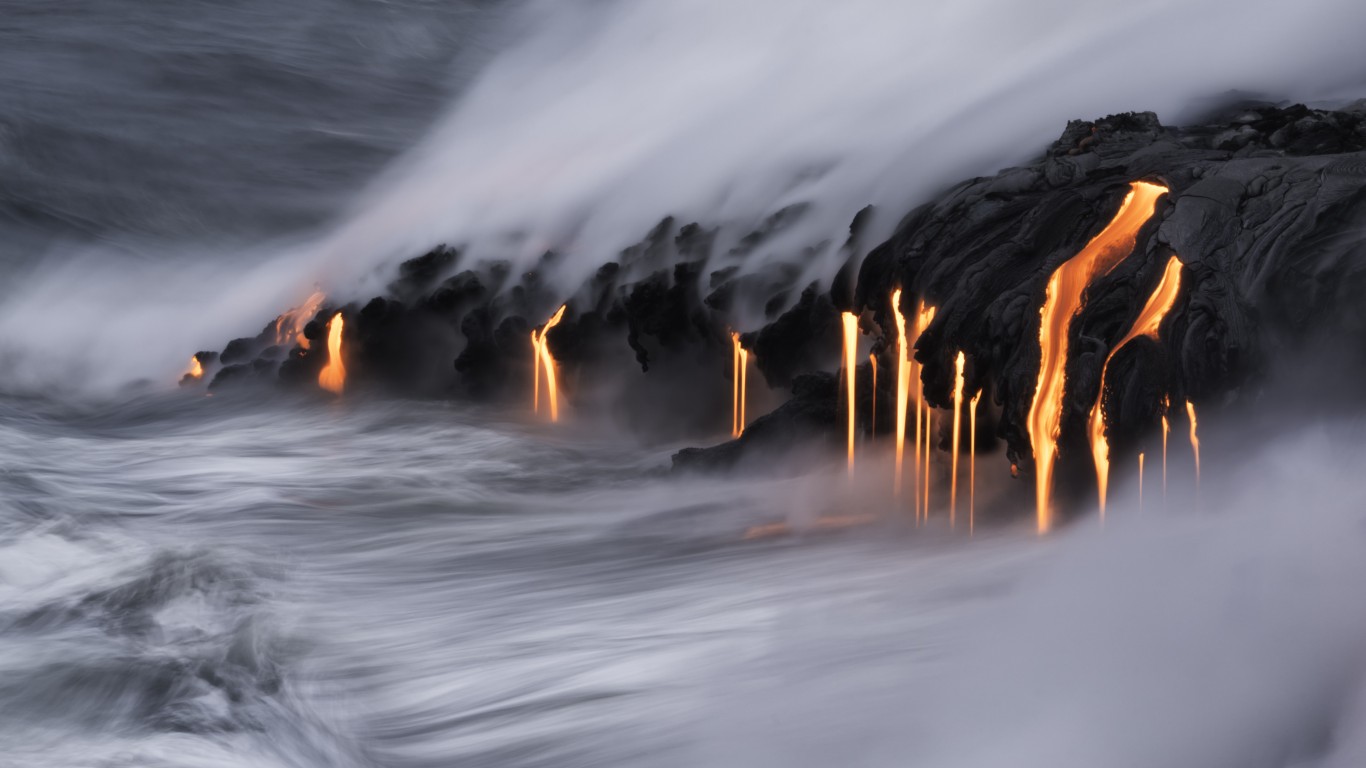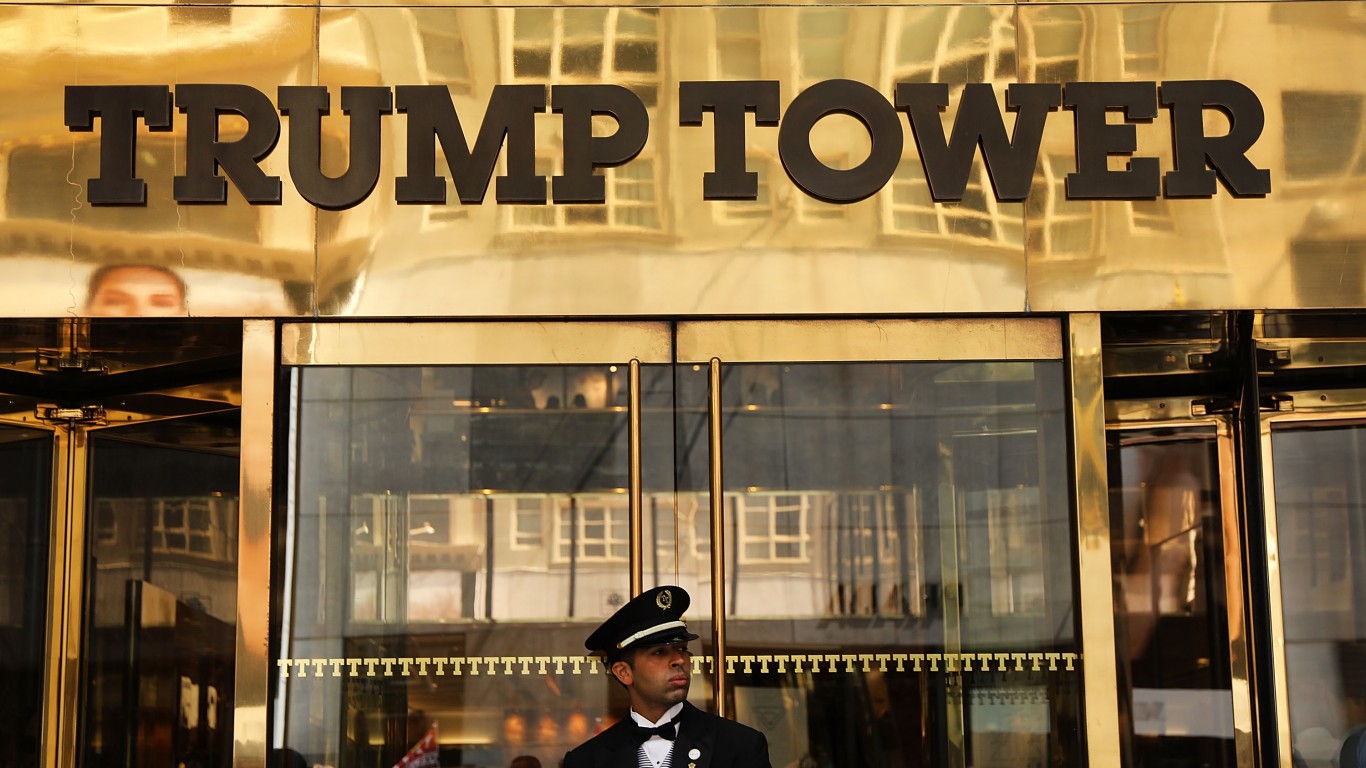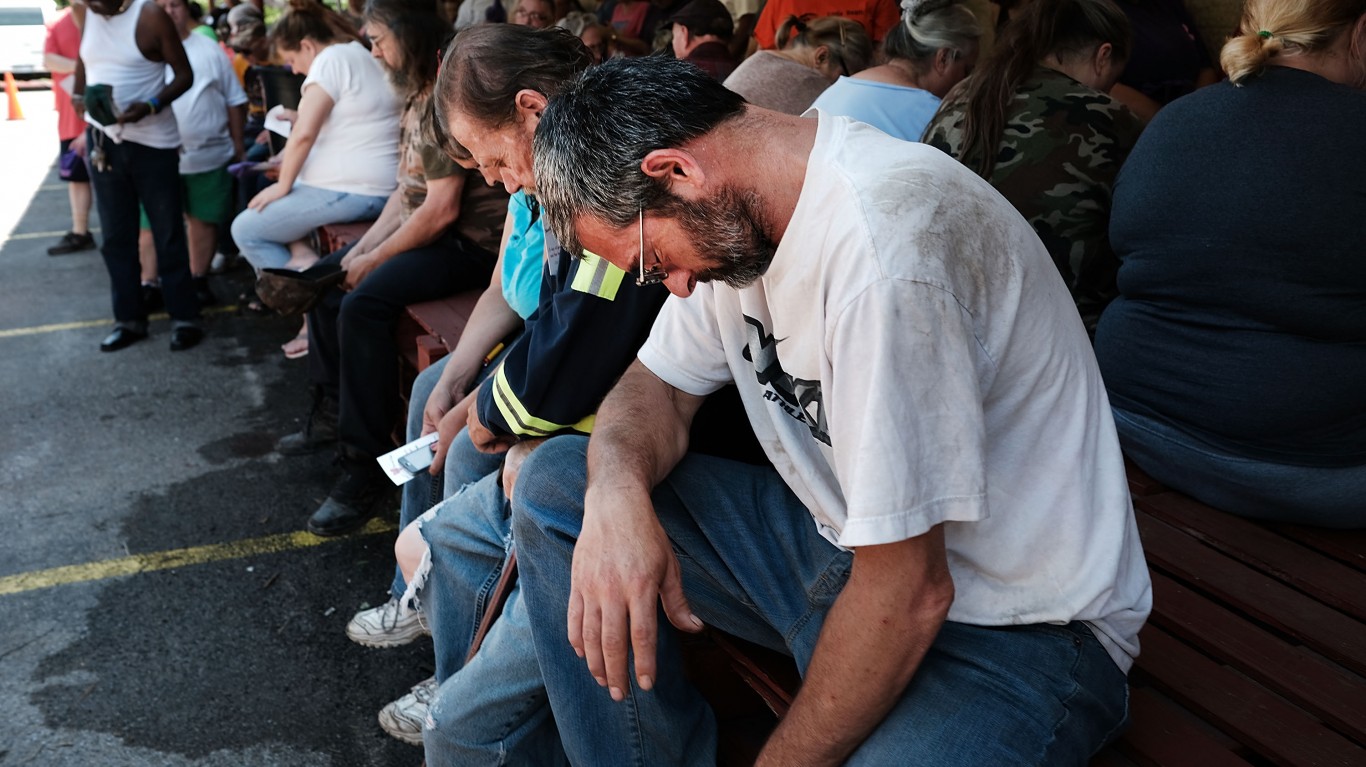
Probably no one alive remembers a huge volcanic eruption in the United States, aside from Mount St. Helens in Washington State on May 18, 1980. That was the deadliest eruption in U.S. history and, by most measures, the most expensive, according to the National Geophysical Data Center. Other volcanic eruptions recently were concentrated in Hawaii and are unlikely to be remembered by most people in America.
The U.S. Geological Survey (USGS) reports that there are 161 potentially active volcanos in the United States. They are mostly along the American portions of the so-called Ring (or Rim) of Fire, a seismically and volcanically active zone stretching along most of the Pacific Rim. That places the majority of the active volcanoes in the country in the Alaskan Aleutian volcanic chain, in Hawaii and in California, Oregon and Washington.
Hawaii’s Kīlauea volcano has been spewing lava since 1983. But a major eruption in the spring of this year threw “320,000 Olympic-size swimming pools’ worth of molten rock from its eastern flank,” according to a report in The New York Times. The USGS continues to monitor flow at the volcano.
To identify the most dangerous volcano in the United States, 24/7 Wall St. reviewed the overall threat score from the “2018 update to the U.S. Geological Survey national volcanic threat assessment.” The most recent eruption year also came from the USGS. The population within 30 kilometers and 100 kilometers (about 18 and 30 miles, respectively), for each volcano was obtained from The Smithsonian Institution’s Volcanoes of the World database.
The USGS ranks volcanoes into five threat categories: very low, low, moderate, high and very high. The assessments account for the volcano’s eruptive activity and history, as well as its geographic location. By that standard, 18 U.S. volcanoes classify as very high threats, with 11 of those located in Washington, Oregon and California, where they loom over large population centers. Alaska is home to five of the 18, owing to their presence near densely populated areas and important economic infrastructure. In addition, the USGS assigns each volcano an overall numerical threat score based on some 24 metrics assessing “a volcano’s hazard potential and exposure of people and property to those hazards (independent of any mitigation efforts or actions).”
The most dangerous U.S. volcano is Kīlauea, Hawaii. Here are the details:
- Overall threat score: 263
- Population within 30 km: 8,495
- Population within 100 km: 169,550
- Most recent eruption year: 2021
Click here to see all the most dangerous volcanoes in the United States.
Are You Still Paying With a Debit Card?
The average American spends $17,274 on debit cards a year, and it’s a HUGE mistake. First, debit cards don’t have the same fraud protections as credit cards. Once your money is gone, it’s gone. But more importantly you can actually get something back from this spending every time you swipe.
Issuers are handing out wild bonuses right now. With some you can earn up to 5% back on every purchase. That’s like getting a 5% discount on everything you buy!
Our top pick is kind of hard to imagine. Not only does it pay up to 5% back, it also includes a $200 cash back reward in the first six months, a 0% intro APR, and…. $0 annual fee. It’s quite literally free money for any one that uses a card regularly. Click here to learn more!
Flywheel Publishing has partnered with CardRatings to provide coverage of credit card products. Flywheel Publishing and CardRatings may receive a commission from card issuers.
Thank you for reading! Have some feedback for us?
Contact the 24/7 Wall St. editorial team.




